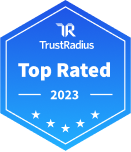SaaS Management Platforms

Top Rated Products
(1-1 of 1)
All Products
(26-50 of 82)
Explore recently added products
Learn More About SaaS Management Platforms
What are SaaS Management Platforms?
SaaS management platforms help businesses proactively identify and manage all of the SaaS applications used in the business. They provide a centralized pane of glass for managing and reporting on SaaS sprawl that has become a norm, especially among enterprises.
SaaS management platforms primarily serve as a singular system of record for what SaaS applications are used across an organization, with mechanisms for proactively or automatically identifying which applications are in play. Beyond this ability, SaaS management platforms often focus on managing either the spend or operations of SaaS applications, with many products expanding to cover both areas.
SaaS spending management usually entails elements of license management, contract renewal management, and SaaS budget visibility and reporting. SaaS operations management entails administering user access controls for SaaS apps, monitoring SaaS onboarding, adoption, and offboarding.
There are several main benefits behind SaaS management platforms. Many businesses will save on costs by identifying and trimming unnecessary or inefficient SaaS spending, such as different business units using multiple collaboration or web conferencing products simultaneously. It also allows for more efficient employee onboarding and offboarding. The former allows new employees to spend less time ramping up, and the latter minimizes security risks when an employee leaves the company. There are other security benefits from improved visibility into the business’s SaaS ecosystem, particularly shadow IT.
Shadow IT Management
SaaS management platforms also enable organizations to gain crucial visibility into the org’s shadow IT. Shadow IT occurs when applications and systems are bought or built without IT or other administrative authority’s knowledge and approval.
Shadow IT isn’t bad by default. Decentralized purchasing and adopting can be more efficient and is often inevitable in larger organizations. SaaS management platforms can allow such decentralization to continue while also giving IT better visibility into the efficiency and security risks associated with the organization’s shadow IT.
SaaS Management Platforms Features
All SaaS management platforms should facilitate either the operations of or spending on the business’s SaaS applications. While the specific features offered may vary, SaaS management platforms should be able to deliver most or all of the following capabilities:
SaaS application discovery
Manage and report on SaaS budget
SaaS license and renewal management
SaaS onboarding/adoption metrics
SaaS data security and compliance
SaaS administrative control over SaaS access
SaaS applications security management
SaaS Management Platforms Comparison
There are some factors to consider when comparing SaaS management platforms:
Catalogs of known SaaS: All SaaS management platforms will be able to identify the most popular applications, such as Google Workspace. Are there more niche applications or SaaS systems that the organization uses, or that may be present in the org’s shadow IT? This is most common among industry-specific SaaS apps, in which case buyers should check platforms’ coverage of products tailored to their industry.
Spend management vs. ops management: Consider whether the organization is more focused on improving operational efficiency or trimming excessive spending associated with SaaS sprawl. While many products can address both issues, they do so to varying degrees, and there are some point solutions that exclusively focus on one or the other. Buyers should choose a product with capabilities that align best with their unique SaaS management needs.
Security features: Security capabilities are still a developing feature set for many SaaS management platforms. Their ability to identify security risks in SaaS ecosystems and remediate the risks, in addition to securing specific activities like employee offboarding, will vary drastically across products, and will continue to shift in the near future.
Start a SaaS management platform comparison
Pricing Information
Pricing will depend primarily on what specific features are purchased. Implementation and deployment support will also frequently increase costs. Some vendors also scale pricing by the amount of SaaS spending that will be managed, starting at a free version for less than $1,000 in monthly SaaS spending in some cases.
































